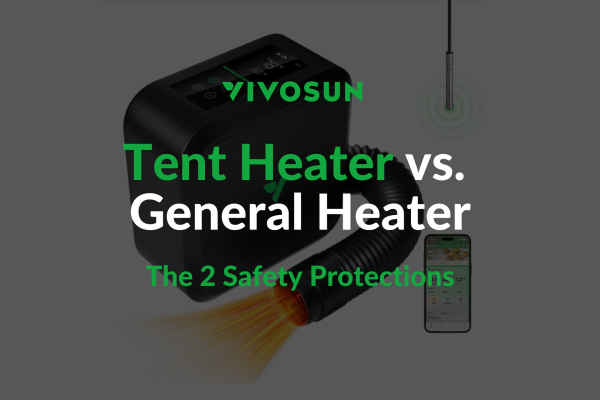Introduction
Under canopy lighting — also known as bottom lighting or under canopy LED lighting — is becoming a popular grow room upgrade among experienced cultivators. It’s designed to illuminate the lower parts of your plants, where traditional overhead lights can’t penetrate effectively. When used correctly, under canopy lights can boost yield, improve bud grade, turn popcorn buds into viable colas, and ensure a more uniform canopy from top to bottom.
What Is Under Canopy Lighting?
Under canopy lighting refers to the practice of placing LED fixtures below the main canopy of plants or at the lower portion of the canopy in order to illuminate the shaded lower leaves and bud sites. This is distinct from side-lighting (sidelight) or top lighting (canopy light).
In many setups the terms overlap: “under canopy LED lighting”, “bottom light”, and “LED canopy lights” sometimes used interchangeably — but technically:
- Under-canopy (bottom) light: below the canopy, facing upward
- Sidelight: mounted at the sides of the plants, facing inward
- Top canopy light: overhead fixture illuminating from above
Each has its place, but under canopy lighting’s unique value is in reaching the lower regions of the plant that top lights often miss.
When and How to Add Side Lighting: 3 Proven Benefits for Bigger Yields
Sidelight vs Under Canopy Light
It’s important to understand the difference — and when to use each — so you can optimise your light strategy.
Placement & Purpose
– Under canopy light:
fixtures placed under the canopy of the plants, pointing upward, designed to reach the lower bud sites and shaded leaves that overhead lights cannot penetrate.
Check What MIGRO LIGHT Says About Under Canopy
See how Fluence maximizing cannabis yields with intercanopy and subcanopy lighting
– Sidelight:
fixtures placed on the sides of the grow area, facing into the plant canopy laterally, used to enhance light penetration at the middle/side of the canopy.
When & Why
– Under canopy lighting is ideal for dense bushes, SCROG setups, or where the lower half of the plant is under-lit. It helps fill out lower buds and convert weaker “popcorn” yields into meaningful flower.
– Sidelights assist when your canopy is tall or plants are on benches and the light from above doesn’t cover side-faces of the plant.
Which to Use?
In many cases you can use both: top lights for the main canopy, sidelights for the sides/mid-canopy, and bottom lights for the lower canopy. The combination ensures fuller light coverage from all angles and helps reduce B-grade buds and popcorn.
A user from Reddit mentions:
Under canopy lighting helps with filling out certain cultivars from top to bottom. Helps color up the lower half of the plant as well so if you were getting a higher ratio of b buds with out em you start to see your B’s percentage go down. Not adding a ton of weight, but the A packs are definitely increased. Went from 20% B’s to less than 7%
When and How to Add Under Canopy Lighting for Best Results
Below is a practical guideline for when to activate under canopy lighting and how to integrate it effectively into your grow cycle.
When to Add It
While under-canopy lights can be used earlier in the grow, they’re most effective in the late flowering stage (for example, the last 2–4 weeks before harvest) when the top canopy is mostly developed and you want to finish the lower bud sites strongly. Some commercial providers, for example, cite average increases of 25-35 % when everything else is managed well.
How to Add It
Here’s a step-by-step approach:
- Choose quality LED under-canopy lights (low heat, full spectrum).
- Mount the lights beneath the main canopy, e.g., 8–12 inches (~20-30 cm) below the lowest foliage layer, angled slightly if needed for better spread.
- Integrate them with your existing lighting schedule: turn them on during the same light-on period as your main lights (or in some cases run for a shorter supplemental period).
- Ensure adequate airflow & micro-climate control under the canopy, since you’re adding light/heat in a previously shaded zone.
- If using sidelights as well, ensure their placement does not overlap too heavily with under-canopy lights (to avoid hot spots or photobleaching) and adjust angles/height accordingly.
Following this method helps you activate the lower bud sites, increase overall light absorption, and convert previously under-performing branches into value.
Are They Always Needed?
The short answer: no, under-canopy lights are not always required. But they become a strategic advantage under certain conditions.
You should consider them when:
- Your canopy is thick, dense or tall and the lower third is under-lit
- You’re training for maximum yield (SCROG, dense setups) where every bud site counts
- You’ve noticed a high ratio of small/popcorn buds or “B-grade” flower in your harvest
But if:
- Your plants are well trained, lean, open-structure and light reaches the bottom easily
- Your setup is small, and incremental yield gains may not justify extra cost or complexity
In those cases, sticking with good top lighting + canopy management might be sufficient.
Benefits of Under Canopy LED Lighting
Here are key advantages, backed by grower reports and commercial data:
- Improved yield: Some commercial-scale guides show 25-35 % increase when lower canopy is illuminated and other factors are optimal (aroya).
- Better bud quality and grade: Lower buds become denser, more resinous, fewer popcorns or B-grade. For example one grower wrote:“Went from 20% B’s to less than 7%.”
- More uniform plant development: Light reaching all levels creates balanced growth from top to bottom.
- Better space utilisation: Instead of expanding grow room size, you can increase output from the same footprint (MIGROLIGHT).
- Reduced labour/pruning: With better light penetration, you may need less drastic defoliation or lollipopping.
User Case Study
Here’s a real-grower example pulled from a community thread on Reddit:
> “We’ve had apples & bananas do 71g/sq ft (in the bag) with under-canopy … then just pulled down superboof at 114g/sq ft (in the bag).” (cites from reddit)
In this case the grower added under-canopy lights during the last two weeks of flowering and reported a roughly ~60 % jump (from 71 g/ft² to 114 g/ft²) under otherwise similar conditions. While individual results will vary, this aligns with the commercial provider’s 25-35 % average yield boost when managed properly.
Additionally, multiple growers in forums reported improving their lower bud grade:
> “Adding 120 watts of light to the canopy improved yield by 20%. … The ‘under-light’ change was in the ‘measurable but insignificant’ category … control vs under light was ~3%.” (cites from thcfarmer)
This shows that context matters: if the canopy and lighting are already highly optimised, the incremental gain from under-canopy may be smaller (~3–10 %) compared to cases where the lower canopy was severely light-limited.
Common Mistakes & What to Avoid
To make the most of under canopy lighting, avoid these pitfalls:
- Installing too early in the cycle — using it in veg or early flower may not provide strong ROI.
- Overlapping light angles heavily (bottom + side + top) so that lower zones receive too intense light or heat stress.
- Ignoring micro-climate under the canopy — extra light means extra heat/humidity, ensure ventilation and airflow.
- Neglecting to adjust irrigation or feeding — more light = more photosynthesis = more resource demand.
- Choosing cheap under-canopy lights without proper spectrum or heat management — specialized fixtures matter.
FAQs about Under Canopy Lighting
- Should I always keep under canopy lights on?
No. They’re best used during the late flowering stage when lower bud sites need the boost. Using them continuously or too early may waste energy and could change plant tempo.
- Should I use additional lights like sidelights after using under canopy lights?
Yes. Sidelights complement under canopy lights by covering mid-canopy and side bud sites. Use them together for full coverage — but coordinate angles, intensity and ensure your airflow is adequate. - If I use under canopy and sidelights together, how do I add them?
Configure your setup so: top fixture covers canopy, sidelights along the sides mid-height, under-canopy lights below the canopy. Monitor for hot spots, adjust spacing/height, and ensure consistent micro-climate. - Does under canopy lighting really boost yield that much?
Yes—provided your lower canopy is light-limited and you integrate everything else (nutrition, environment, training). Some growers report 25–35% increases; others only 3–10% when canopy was already well lit. - Are under canopy LEDs worth the cost?
In the right setup (dense canopy, large plants, yield-focused) they often pay for themselves in one or two runs. But for small or open-structure grows, you may get diminishing returns.
Conclusion
Under canopy lighting is not a gimmick — it’s a legitimate strategy for improving light distribution, maximising yield, and improving flower quality in indoor cultivation when done correctly. While it’s not necessary for every grow, if your canopy has shaded lower zones, the benefits can be substantial. When paired thoughtfully with top lighting and sidelights, and with proper micro-climate control, you’ll unlock full-plant potential from top to bottom.








